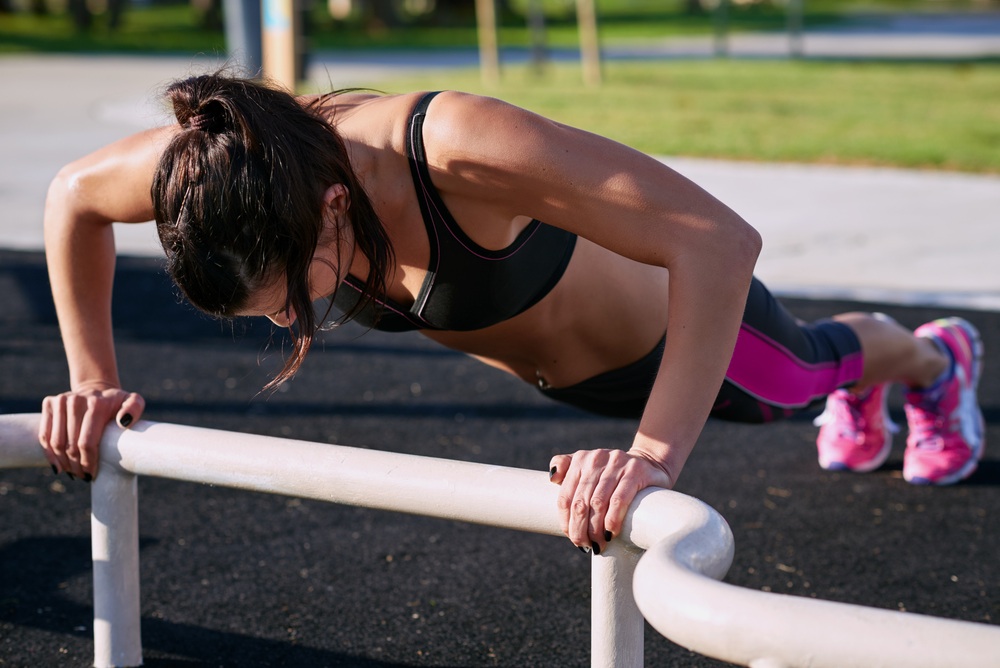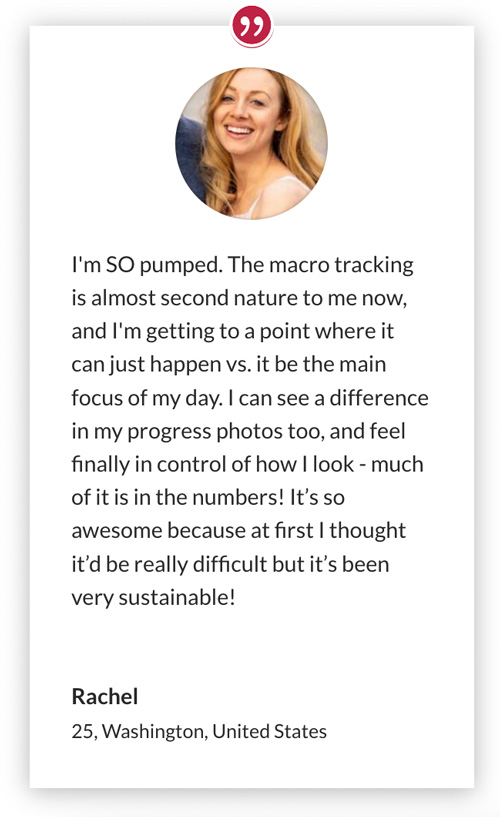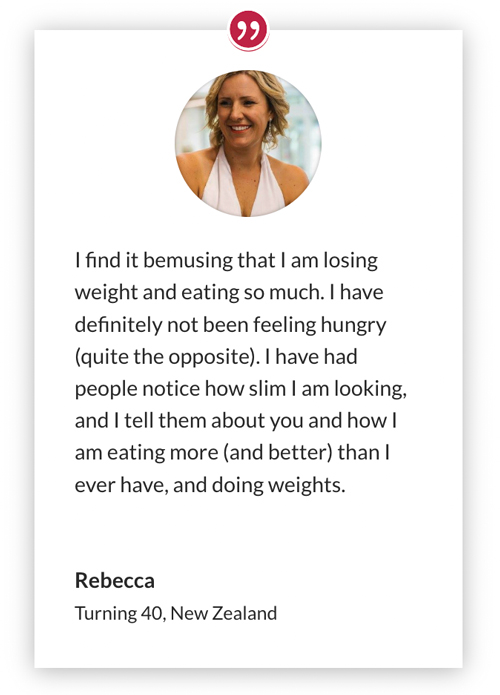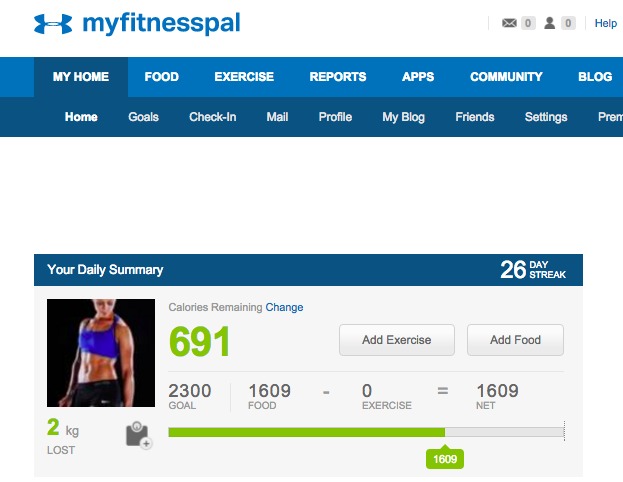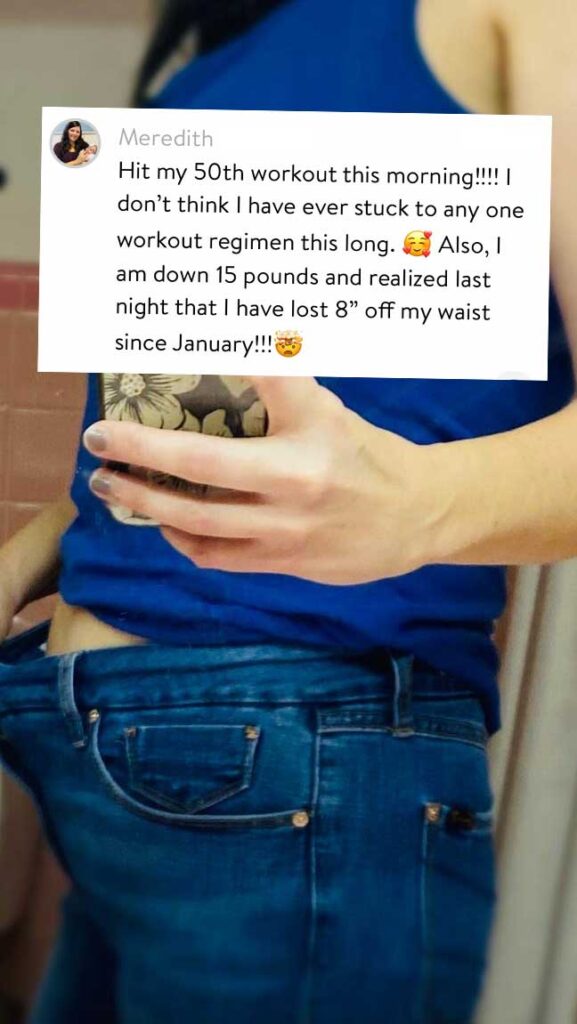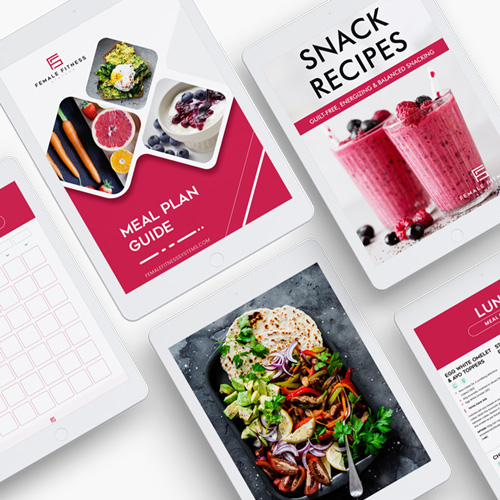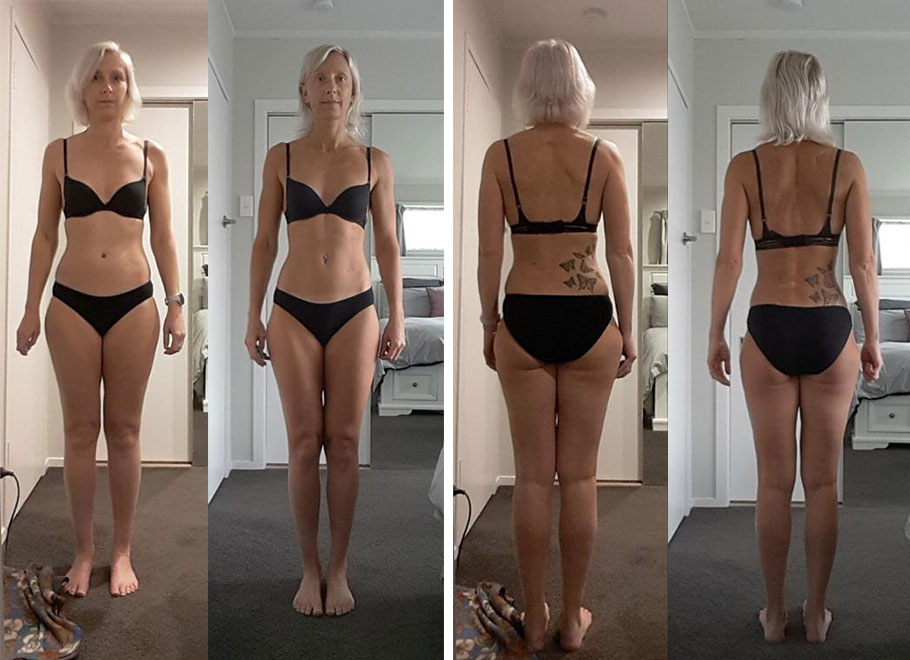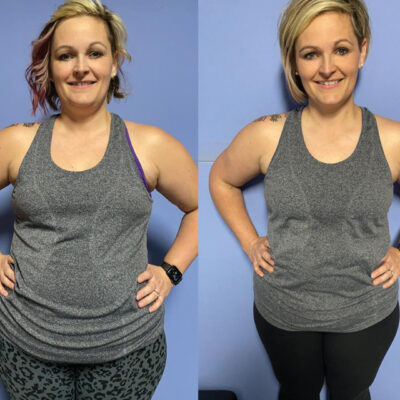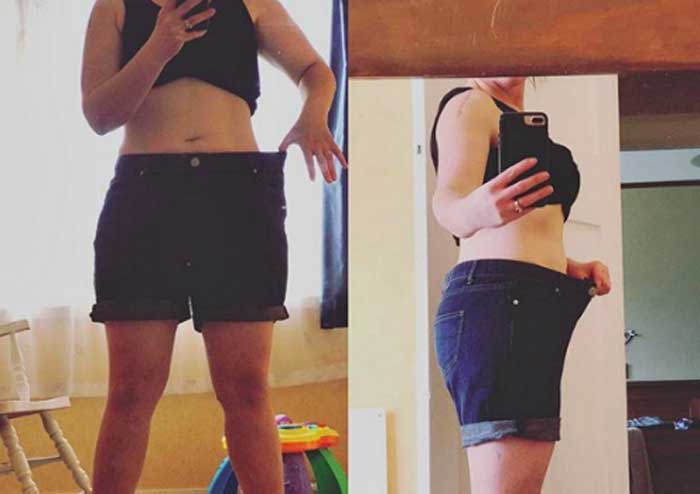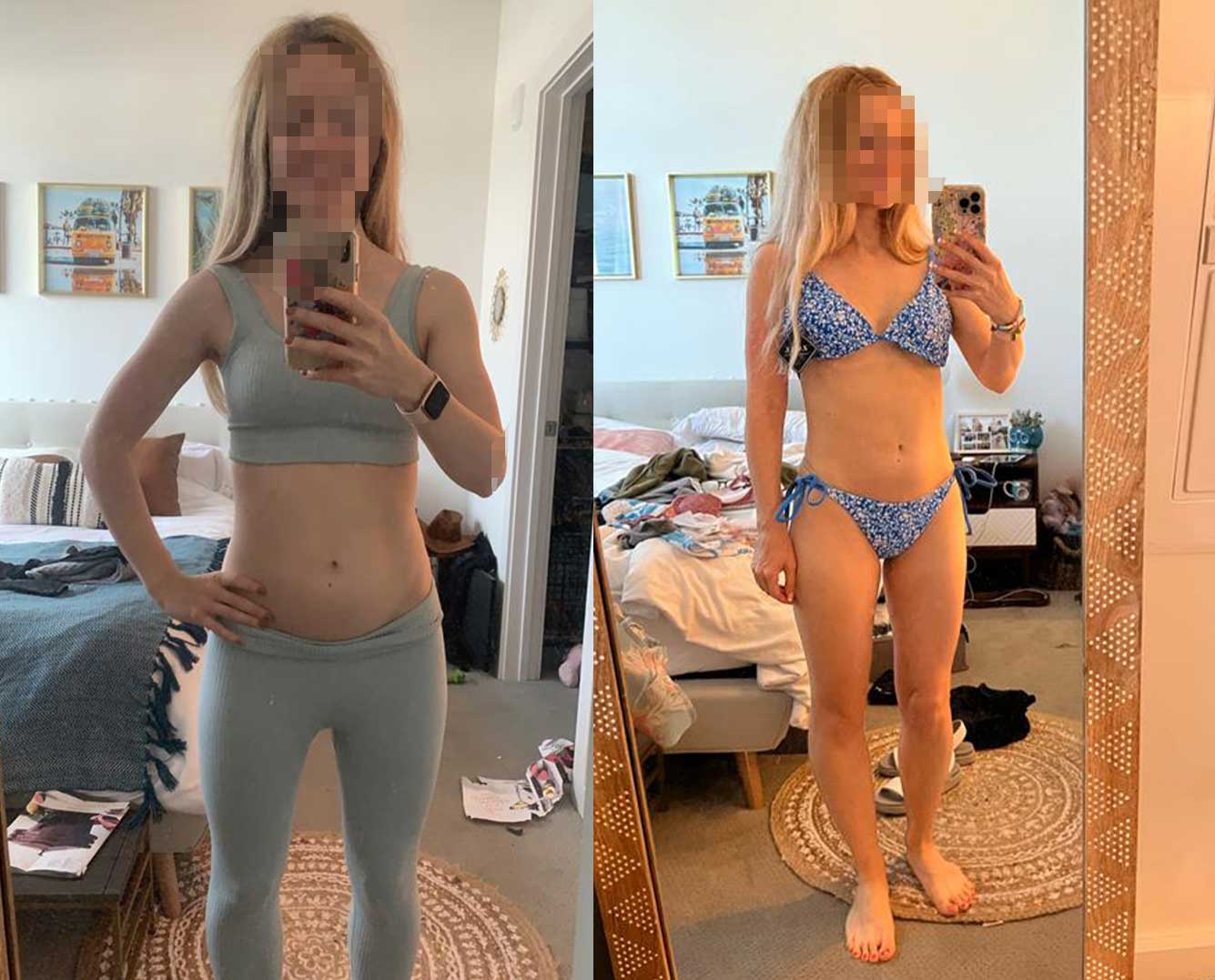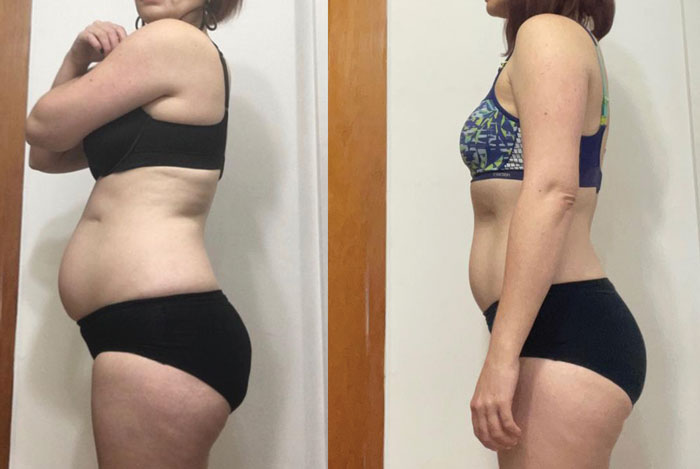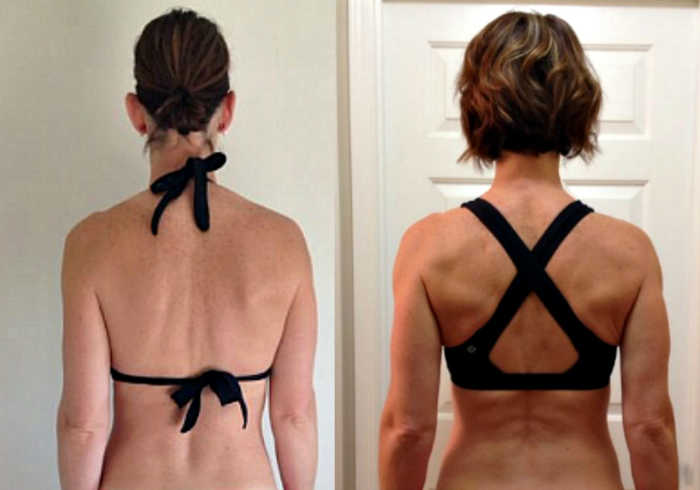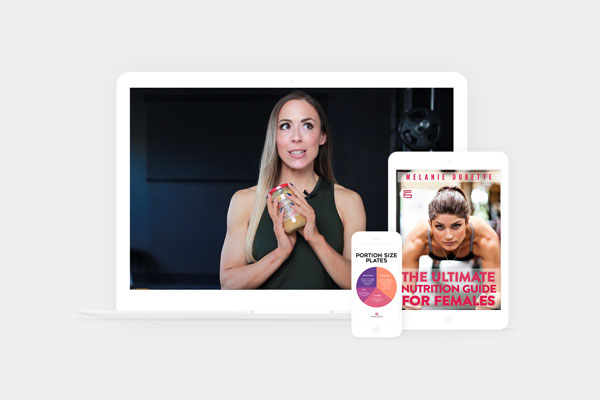How Many Calories Do You Need?
There is so much information out there about how many calories you need – it can be really confusing. Don’t worry – I’ve got you on this one! Based on my experience as a nutrition coach and working with so many women over the years, I’ve come up with an easy way to figure out how many calories you need. This is more straightforward than all the complicated formulas out there and it has worked for all of my ladies – so it will work for you too.
I’ve jam-packed this article with so much information that you can consider it your ultimate guide to how many calories you, as a woman, need. Whether your goal is to lose or maintain weight, or even gain muscle, if you apply the knowledge you’ll gain here – you’ll get great results. How can I be sure? Because so many other women just like you have done the same. This doesn’t have to be difficult so let me help!
There are some complex formulas you could use, but I have a better, easier way for you to get started.
The problem with formulas is that many factors impact on how many calories you need:
- your activity levels
- your goals (ie. losing weight versus gaining muscle)
- how much muscle/fat mass you have
- whether you have a history of dieting and regaining weight
- what stage you are at in your menstrual cycle
- your age and whether you are near or in menopause
- your nutrition status
- the type of food you eat
- whether you are sick or injured
- sleep quality
- stress levels
- genetics.
The formulas don’t reflect the complexity of your body and lifestyle. And, to be honest, I’ve found that intuitively a lot of women know how much they should be eating and the formulas on apps like MyFitnessPal are often wrong. It means ladies start to question their own experience and I would rather you be in control of your body and results.
When I work with my clients we can usually quite quickly figure out where they need to be with their calories. So rather than rely on complicated formulas, let me show you an easier way to estimate your caloric needs.
An Easier Way To Estimate Calories
Over the years I’ve noticed patterns with women and I can now usually accurately estimate how many calories someone needs without running any calculations.
My approach is:
- To start a client on a set amount of calories that I believe will work for her based on my experience; and then
- Adjust when we see how her body responds.
The good news is that I’m going to teach you exactly how to do this for yourself in this article.
I’ve created this helpful infographic that walks you through calorie counting step-by-step:
Eat More To Lose Weight
Before we look at how many calories you need, I want you to understand something.
When it comes to losing weight, you probably think less calories is better. But…
one of the biggest mistakes you could be making is not eating enough calories to lose weight.
Another way to put it is that you should eat as much as possible while you are losing weight.
Now don’t get me wrong – if you eat too much you’ll gain weight. But if you don’t eat enough – well, you might gain weight too. Here’s why.
The truth is you’ll lose weight quickly at first on a very low calorie diet. But the metabolic changes that happen in your body when you dramatically reduce your calories and increase your exercise will make it hard to maintain that weight loss. One of the reasons for this is that your metabolism adapts to these extreme measures by slowing down and consequently your weight loss stalls.
If you don’t eat enough you risk:
- hitting a plateau too soon
- losing muscle and looking skinny fat
- slowing down your metabolism
- losing bone density
- losing fertility
- decreasing energy and immunity.
If you have good nutrition, including eating enough protein, and you weight train, you’ll minimize these negative adaptations. However, the more severely you restrict calories, the more severe the adaptations and the harder it becomes to lose weight and keep it off.
What do I mean by this?
Let’s look at some examples.
A Restrictive Approach (1200 calories)
Say you lose weight by eating 1200 calories a day, lifting weights 4 or 5 times a week and doing cardio most days. It’s hard to maintain this restrictive approach in the long run. You’ll be more likely to:
- Be hungry and undernourished
- Be tired and irritable
- Get sick more often
- Binge eat (and regain weight)
- Hit a plateau
- Burn out and give up.
Consider another scenario. What if you implemented a weight loss plan that was more sustainable? Something you could actually stick with because you didn’t feel so hungry?
A Moderate Approach (1600 Calories)
Say you lose weight by eating 1600 calories a day, lifting weights 4 to 5 times a week and walking your dog for light cardio most days. Using this more balanced approach, you’re more likely to:
- Feel satiated
- Have less cravings
- Sleep well and feel rested
- Have more energy to train hard
- Maintain your weight loss in the long run
Losing weight on 1600 calories will feel a whole lot better than losing weight on 1200 calories and you’ll be more likely to sustain the changes you’ve made in the long run.
Eating more to lose weight also gives you wiggle room when you hit a plateau. When your weight loss stalls, you’ve got room to drop your calories or add in some more cardio. And, the interesting thing that I’ve found in my work, is that you are less likely to hit a plateau when you are eating more. Likely because those metabolic adaptations aren’t kicking in so strongly.
So now that you understand why eating more can work in your advantage, let’s look at how to calculate calories.
How To Calculate Calories
Now that you understand why eating more – not less – is better, let’s look at how to calculate calories.
Almost every woman I have worked with has been able to lose weight eating between 1500 to 1700 calories a day.
So this is usually my starting point and we adjust up or down based on how you are responding. That’s it – very simple! However, there are a few exceptions to this starting point.
The Exceptions:
The Chronic Dieter/Smaller Frame
If you have a history of dieting and find it hard to lose weight, you may have reduced your caloric needs below 1400 calories because of the metabolic adaptations when you chronically restrict calories and overexercise.
Ladies who are more petite or shorter also sometimes need to eat less.
The More Muscular, Leaner or Active Than Average Woman
Some women need more significantly more calories, even when they are losing weight. Sure they can lose weight on 1500 to 1700 but that doesn’t mean they should. These women are usually athletic, active and/or have more muscle mass than most other females. Often ladies don’t realize they fall into this category but if you are someone who is near your ideal weight and quite active, you likely need more calories.
For example, I just worked with a client on a reverse diet. We started her at 1400 calories because her weight had been stuck for so long but we were able to get her maintenance calories up to 2100. She was likely able to eat more because she was following my weight training program and dancing regularly. Even though she had an office job, she needed more calories because of all her activities.
Many ladies using my online training programs can actually eat more than average – likely because they are training weights 4 to 5 times per week.
Here’s how to figure out what works for you.
Calorie Ranges For Women
Below I’ve set out the ranges I use and given you some clues to help you figure out where you fit. These ranges are based on patterns I’ve noticed working closely with women over the years and helping them find their sweet spot for calories. Try to figure out where you fit and then make sure you read the following section where I teach you how to know if you’ve found the right calories.
1300-1500 Calories
You may fit into this range if you:
- Have a smaller build
- Have a history of chronic dieting
- Find it hard to lose weight and keep it off
- Have irregular eating habits
1500-1700 Calories
You may fit into this range if you:
- Are heavier than you want to be
- Don’t lift weights, or only lift weights once or twice a week, or you are a beginner lifting weight more regularly
- Are moderately active (ie. you might do some group fitness classes, walk, yoga, etc)
**Note most women start in this range at 1600 calories unless they clearly fall into an exception.
1700-2100 Calories
You may fit into this range if you:
- Are leaner and more muscular than most other women
- Are quite happy with your weight, maybe you would like to lose a bit more but not too worried about it
- Have a dedicated weight training program and lift weights 4-5 times a week
- Are very active and/or have an active job
- Don’t have a history of dieting
- Don’t have any trouble losing weight
How To Make Adjustments To Your Calories
Once you have figured out how many calories you need, the next step is for you to test it which means you have to consistently track calories at that level and see how your body responds. I recommend giving it 3-4 weeks because as women our weight fluctuates a lot so it’s hard to tell what’s real weight loss and gain without giving it a significant amount of time.
The best way to do that is to use a calorie tracking app like MyFitnessPal, track everyday and also record your weight. Don’t worry about small fluctuations. You are looking for a downward trend over about a month. Little tip: the best time to measure is often just after your period finishes because that’s the lowest weight for most women each month.
So once you are tracking, here’s how to decide if it’s working for you:
1. You are losing 300-500g or about 1lb per week.
If you aim for a weight loss of 300-500g or 1 lb per week (excluding certain times of the month you cyclically gain weight link) you’ll be on the right track. Women are often disappointed when I first suggest this amount to them. I can see by the look in their eyes that they want more. Social media has really confused us when it comes to expectations. Trust me on this one – slower is more sustainable.
You may well lose more weight quickly at the start. But I want you to know that it’s not always going to be like that. At some point your weight loss is going to slow down, and when it does, if you are still losing 300-500g per week, or even 200g per week, that’s ok.
Also, if you are leaner you might not get the big drop in weight at the start that someone who has more weight to lose may experience. 300-500g (or 1lb) per week is often recommended for leaner individuals trying to lose weight because slower weight loss preserves muscle mass better.
Don’t set unrealistic standards for yourself. Look for that sweet spot where you are losing about 300-500g per week.
If you aren’t losing weight after 2 weeks of starting your calorie tracking, drop your calories by another 200. If you are losing weight too fast (ie. you are too hungry, tired, etc), adjust by eating about 100-200 more calories more per day.
One thing to note is that when you start a muscle building program, especially if you haven’t lifted weights before, you may not see the scale drop as you expected. You could be losing fat and building muscle – especially the more of a newbie you are to lifting weights. If that happens, you can also use measurements (especially your waist, hip and thigh circumferences), how clothes fit, the mirror and other people’s compliments as indicators of your progress.
Also don’t expect your weight to drop during those times of the month when you normally gain weight. Learn how to identify the times of the month you gain weight and what to do about them here.
2. You aren’t too hungry and your energy is good.
When you are losing weight, you are bound to feel a bit hungry. But if you can’t stop thinking about food, get light-headed or feel shaky between meals then you aren’t eating enough.
You should be starting to feel like you could eat 3-4 hours after your last meal but you shouldn’t feel as though you are starving.
Signs you aren’t eating enough include:
- not being able to go 3-4 hours between meals without feeling very hungry
- having abnormal cravings
- low energy
- feeling weak when you train
- feeling as though you can’t get out of bed in the morning, and
- being more emotional than normal.
Why You Need To Count Calories
I know counting calories is a real pain but so is staying where you are and never getting results. Rather than viewing it as something “restrictive” I encourage all my ladies to view calorie counting as a tool to learn more about their body. If you want to transform your body you need to understand it. It also puts you in control of your results. Instead of relying on someone else to tell you what to eat, with calorie counting you can figure out exactly what works for your body.
It takes work – especially in the beginning. But, in my experience, ladies who stick with it are so pleased with the results. They always tell me that they wish they had known a long time ago that nutrition didn’t have to be so complicated.
If you want some help with all of this, I’ve created a program that takes care of everything for you. Here’s what’s included:
- Over 60 recipes (calories done for you!).
- A Guide to help you incorporate your own meals and calorie counting so you can adjust it for your own unique needs.
- Two detailed coaching videos to help you get started.
- Lifetime access to my private coaching group with a database of supportive and motivating “behind the scenes” videos.
- And so much more!
A Meal Plan just for you! Learn more…
WOULD YOU LIKE MORE SUPPORT?
If you want even more accountability and support, check out my Premium Nutrition Coaching Program here.

